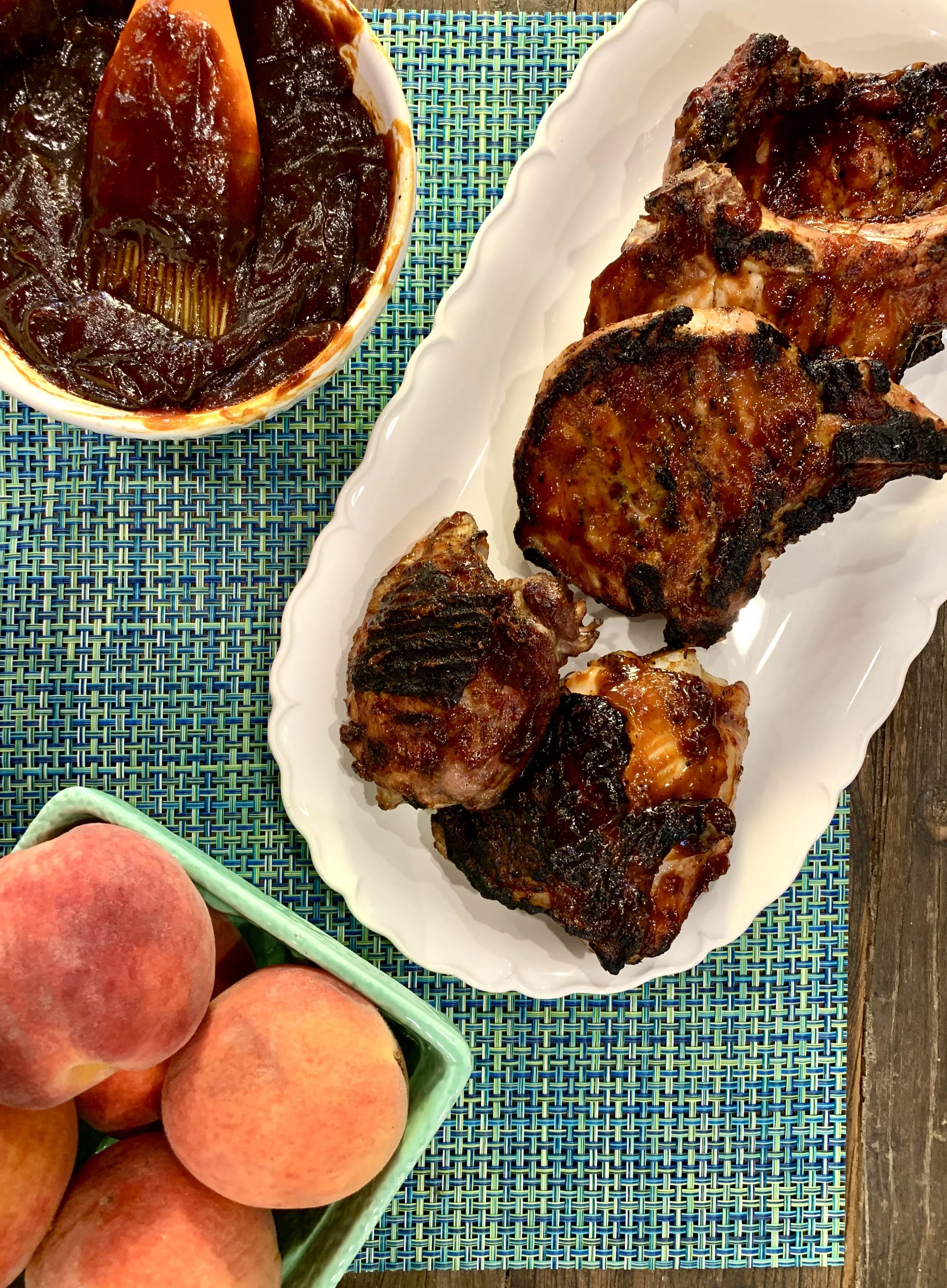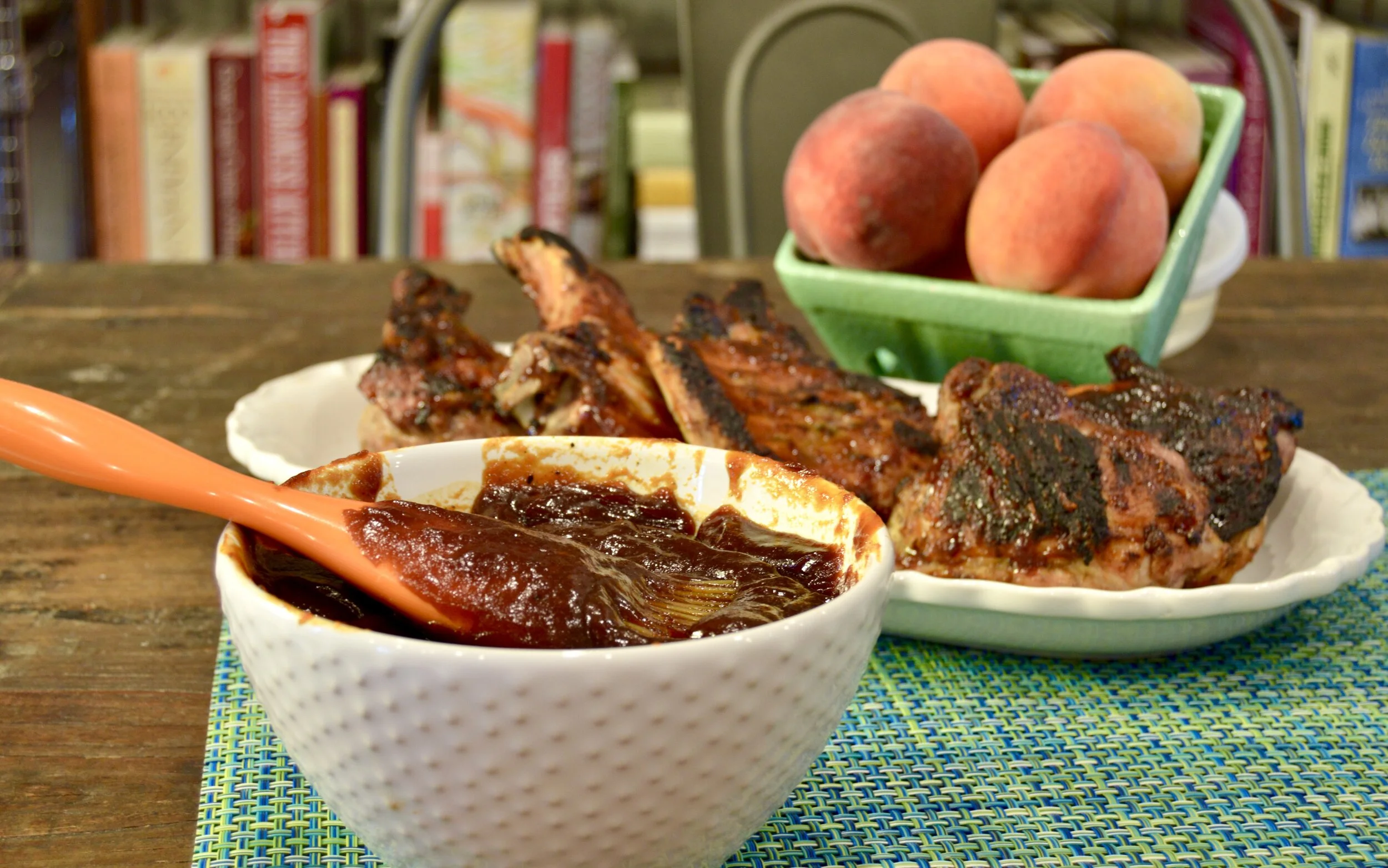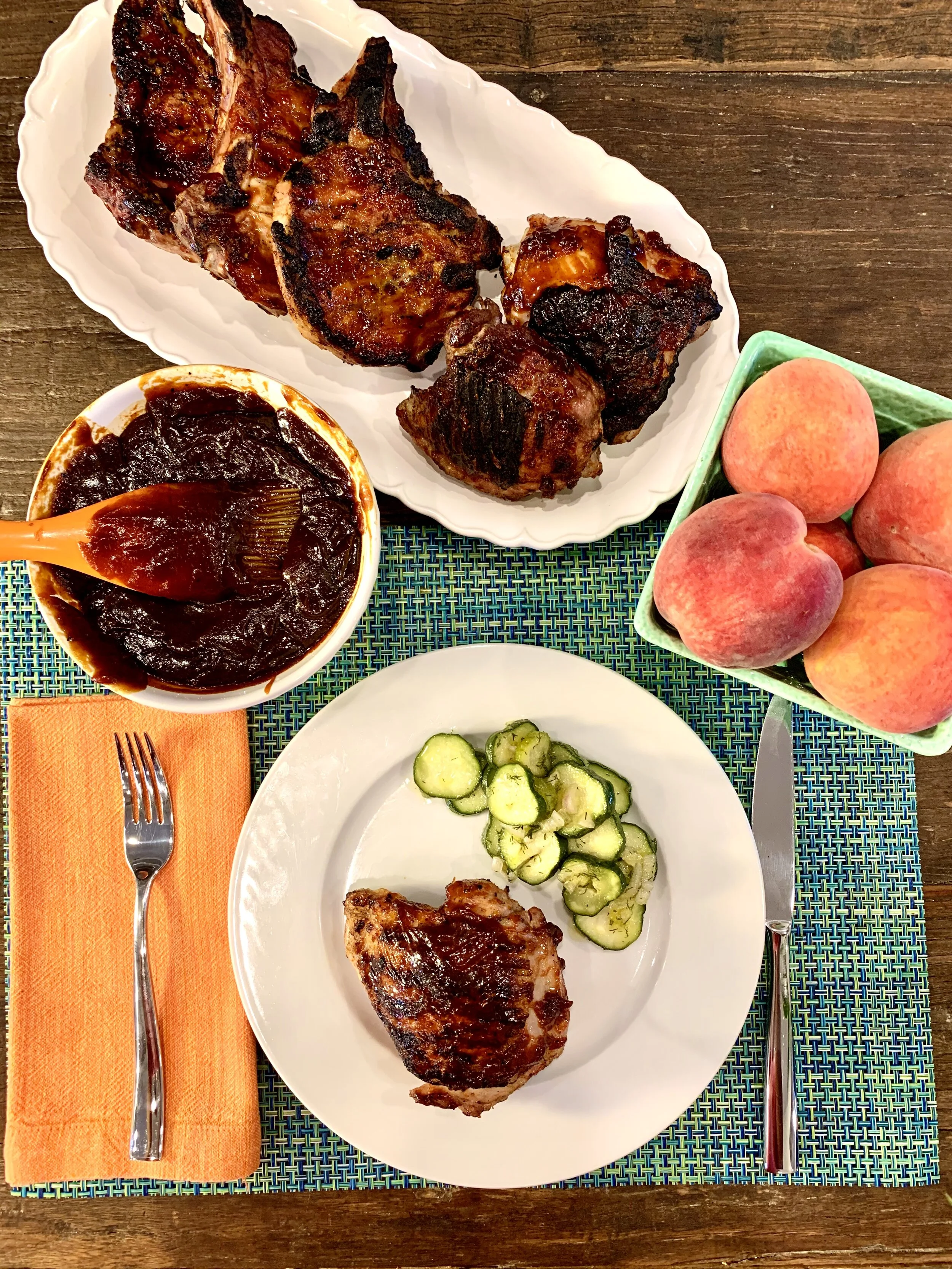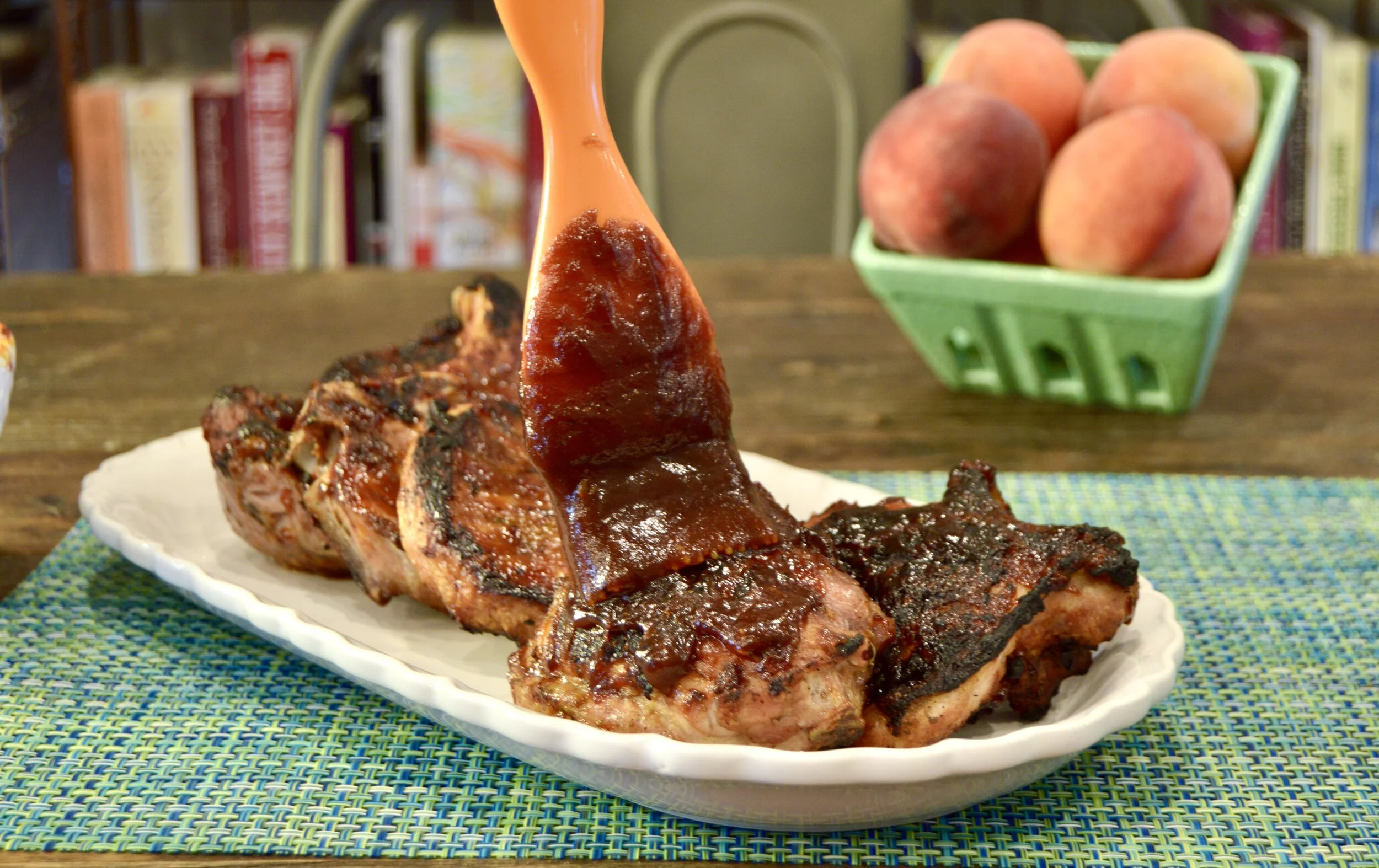Meat on the side.
What has changed in eight years (other than the really obvious, thanks 2020!)? Rereading my post below from July of 2012 I noticed a few things. First, I’d like to think that with three cookbooks, a few dozen published pieces and hundreds of blog posts under my belt, I am a better writer. I won’t shout that one from the mountain tops though, just in case.
Secondly, my shelf of grilling books has expanded beyond Chris Schlesinger’s Thrill of the Grill though I do still turn to it for inspiration. Today, I flipped it open to reread the recipes that I mention below. A thorough search failed to turn up any recipe for marinated, grilled zucchini. I did, however, find the barbecue sauce.
Which brings us to the third things I’ve noticed has changed over the past eight years. I quickly scanned the ingredients and skipped right over the directions, having no plans to make a batch anytime soon. Then I saw the sidebar. Over several hundred words Chris shares his thoughts on the role of sauce in really good barbecue, suggesting it is almost an afterthought to the technique of slowly cooking meats, infusing them with rich smoke.
I have noticed over the last eight years that I have moved from poring over to recipes to reading the introductions, the stories and the sidebars. Footnotes, that once seemed like a punishment assigned by school teachers, are now fascinating.
What I have learned over the past eight years is that the knowledge of the writer, their experience, their unique voice and perspective, are more often found in text than in lists of ingredients. This is where I discover what makes the food they put on the plate truly special. Google any recipe or any recipe concept and you will find dozens if not hundreds of versions, none dramatically different than the others.
However, it is not in the big details, but the small ones - an ingredient here, a technique applied there, and their passion for and love of food that makes a recipe truly stand apart. And that, that is what has changed the most for me in the past eight years. That said, this peach barbecue sauce is still pretty darn good.
"I'll take 'things you can make from scratch' please, Alex."
Monday, July 9 2012
It's not often I pull out a cookbook and follow a recipe step by step. Usually faced with an ingredient or inspiration, I pull book after book off the shelf combing them to profile flavors and techniques before hitting the kitchen to experiment. But recently I was bored.
Ready to grill thick-cut, bone-in pork chops, the season's first fresh peaches and young zucchini, I wanted to do more than salt, pepper, olive oil and fresh herbs. So, I went to my go-to, Thrill of the Grill by Chris Schlesinger, the [former] chef of Cambridge, MA’s [now-closed] East Coast Grill, and he didn't disappoint. I made his barbecue sauce and marinated, grilled zucchini as written. I simply brushed the peaches with vegetable oil and threw them over the hot coals. No longer bored, I was inspired.
The grilled peaches were delicious, but I wanted that peach flavor right on the grilled pork so I set out to make a peach barbecue sauce. I started with Chris’s recipe as a guide. I cooked down fresh peaches into a thick pulp, then deglazed the pan with peach-infused vinegar. Cumin, cardamom and dry mustard gave depth, chili powder and fresh ginger heat, and a chili oil delivered smokiness. Glazed grilled pork chops were delicious.
Peach Barbecue Sauce
Makes 3-4 cups sauce
Barbecue sauce - the sticky, sweet and sour, ketchup and molasses kind - is brushed at the last minute onto grilled meats and not used for barbecuing at all. That said, this sauce delivers the sweet, acidic and floral flavors of summer peaches with a complex-but-easy blend of spices in the form a sugary glaze to grilled pork chops, chicken quarters and salmon. It is wonderful tossed with baked, fried or grilled wings.
Ingredients:
2 tbs butter
1/2 red onion, diced, about 1 cup
2 peaches, diced
1 tbs minced, fresh ginger
1 cup molasses
1 cup ketchup
1 /2 cup rice wine or peach-infused white balsamic vinegar*
1 /2 tsp cardamom
1/2 tsp Ancho or Guajillo chili powder
1/2 tsp dried mustard
1/2 tsp ground cumin
1/4 cup olive oil
1 tsp chopped chipotle in adobo or a pinch of red pepper flakes
Directions:
Melt butter in a small saucepan over medium heat. Sauté onion until softened. Add peaches and ginger. Cook until they are soft and mash with a fork. If your pan gets dry add a little water to keep peaches from burning.
Add all remaining ingredients except Chipotle and olive oil, and simmer for 20 minutes until thickened. Add Chipotle or red pepper flakes and olive oil, and simmer for 2 additional minutes to bring together.
Season to taste with additional oil, vinegar or molasses, salt and pepper. You are looking for a nice sweet-sour balance without overpowering the fruit.
You can use like this or, for a smoother sauce, puree in a food processor or blender. This will store in the fridge for 2-3 weeks.
TIP: Rule #1 of barbecue sauce: use it toward the end of your cooking, about 2 minutes per side, right at the end. Place your sauced ingredients just to the side, not directly over, the hot coals, to more gently caramelize the sugary sauce into a glaze. Otherwise the sugars will burn.




